Everything You Need To Know about Cranes
This blog contains information about different topics that could be useful for mechanical, electrical and electronic professionals. We look forward to contributing to the expansion of your technical knowledge.
Cranes are different from other pieces of construction equipment because – at their most basic function – they do not require other machinery or power to function. The bulldozer, excavator or tractor required some form of power – whether it be steam or gas, or oil. Many modern construction equipment dates back to some time in the 1900s. Not the crane. The crane is the grandfather of all construction equipment.
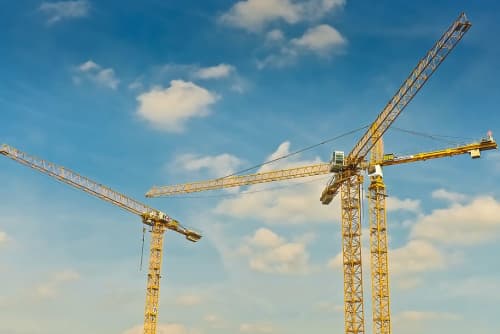
What Is a Crane?
A crane is a machine that is used to lift and move heavy loads, machines, materials, and goods for a variety of purposes. They are used in all different sectors of industry, from construction to manufacturing to shipbuilding and material loading. Cranes are common along skylines as they are necessary to build the skyscrapers we so often see in our cities today.
The Basic Components of the Crane
While there are many different types of cranes, there are a few basic components worth mentioning. The main parts that can be found on a crane are the:
- Boom
- Jib
- Rotex Gear
- Outriggers
- Counterweights
- Reinforced-steel cable
- Hook
The Boom
The boom is the most recognizable part of a crane. The boom is a long arm that can either be telescopic or fixed. They take on a variety of roles depending on the type of crane and how it is built. They are able to work without jibs and are sometimes the main component on a crane.
The primary purpose of the boom is to lift, move and position material. They bear the majority of the load and are responsible for determining the reach of the crane.
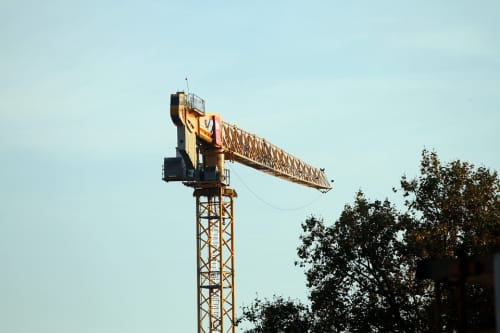
The Jib
The jib of a crane is the lattice-type structure attached to the end of the boom. Using a lattice-type build helps to reduce the weight it adds to the front of the boom. It is fixed in length and cannot be extended or retracted like a boom can. Some versions of mobile cranes have a jib fixed to the end of the boom to help move and lift materials.
The jib or jib arm has one main purpose: to help keep the material clear of the main support so that it doesn’t hit it while being moved.
That being said, jibs are not always required and are often looked at as extra pieces that can be used when needed.

The Rotex Gear
The Rotex gear is the mechanism below the cab of the crane. It allows the cab and boom to rotate left and right. A simple movement, but incredibly important for the function of the machine.
Counterweights
The name “counterweight” pretty much describes the purpose of them: to counter the weight on the front of the crane while lifting material to prevent tipping. They help add stability to the machine and generally increase stability.
Many cranes have adjustable counterweights so that they fit the specific requirements of a load or job. On tower cranes, for example, the counterweight can be seen at the other end of the jib.
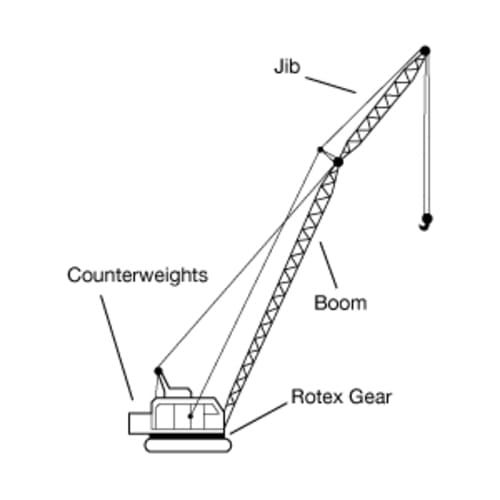
Outriggers
Outriggers may be one of the most important factors for crane safety. The function of an outrigger is to supply additional support. The purpose of an outrigger is to distribute the load of the crane over a large enough area so that the crane itself doesn’t tip over or become unstable. All outriggers should either meet or exceed the weight requirements of a crane or job.
Outriggers do not compensate for unstable land. OSHA requires cranes to be assembled on firm ground that is drained and graded sufficiently. Supporting outriggers are meant to be used in conjunction with proper ground standards and do not make up for unstable ground.
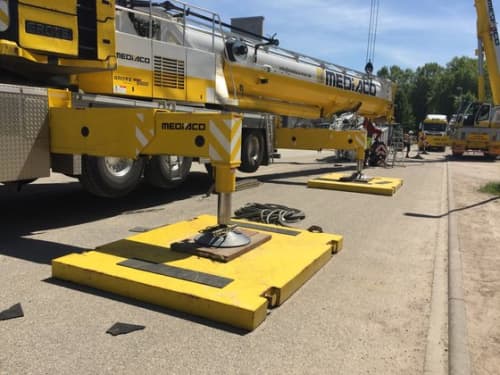
Reinforced-Steel Cable
In order for cranes to actually lift and move material, they require some kind of line or rope to do the actual lifting. In the case of cranes, this material is a reinforced steel cable. Steel ropes were first used for mining hoists in the 1830s. The wires used today are highly reinforced, resistant to corrosion, absorb any movement or force, and have extremely high breaking points.
The Hook
Finally, the crane must have some way for materials to be attached to it. The most typical way this is done is through a hook. The lifting hook on cranes is usually equipped with a safety latch to prevent the material from slipping off the hook in transit.
Crane lifting hooks are often made of steel or wrought iron. Hooks for heavy-duty cranes and loads are usually heat-treated and forged in order to make the hook as strong as possible.
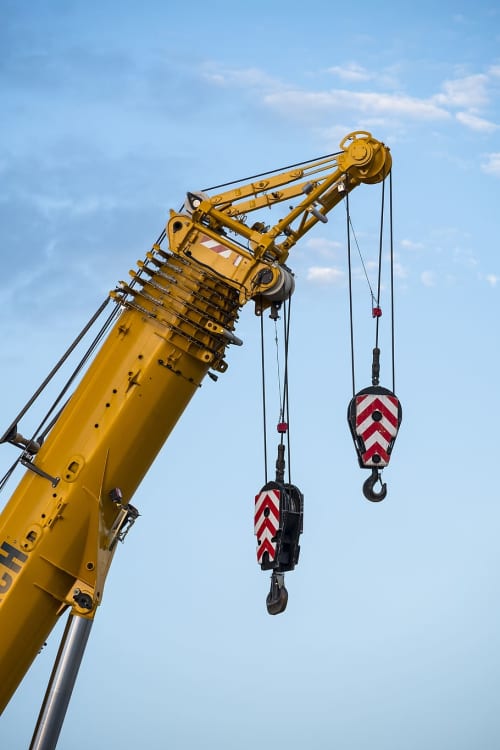
The History of Cranes
Cranes originate back to the 500 B.C era of the ancient Greeks. According to archaeological findings of lifting tongs and lewis irons in stones, it was no later than 515BC when cranes were being used to build Greek temples. Some researchers date the crane back even further – as far as 700 – 650 B.C.
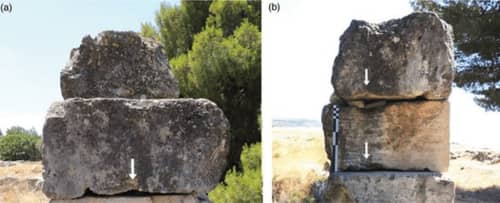
Whatever the date was, it’s clear that the idea of using a machine to lift, move and place building materials came way earlier than you may think. Unlike many other ancient civilizations that used manual labour or ramps to move equipment, the use of a mechanism to simplify the task speaks to the mindset of the Greeks. After all, they are also responsible for geometry, the alarm clock, the lighthouse, democracy, and even central heating.
According to architectural historian Allessandro Pierattini from the University of Notre Dame in Indiana, “no previous civilizations are known to have used it, and it has remained central to building construction without remarkable changes for nearly 25 centuries – because it was perfect.”
It could be argued that the use of lifting tongs and lewis irons doesn’t equate a crane but the makeup of their machine with the cranes we know today really aren’t that different.
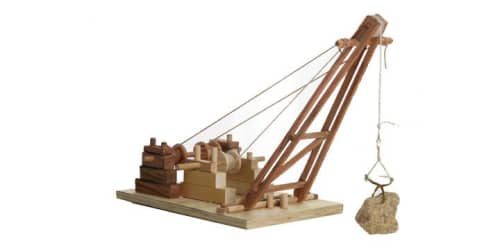
The Evolution of the Crane
The use of a simple pulley system transitioned into being man or animal-powered to provide some extra strength. In turn, this turned into a manpower treadwheel which allows for the cranes to lift heavier objects.
By the middle ages, the crane was adapted to help load and unload ships at docks as well as assisting in construction. Since the cranes on docs would be more fixed, many were built into stone towers or larger wooden structures. At this time, the crane itself was still most often made of wood.
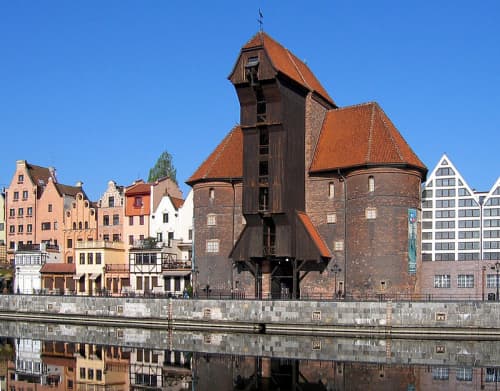
Cranes During the Industrial Revolution
Like most machines in history, everything changed during the industrial revolution. Mechanical power via steam engines transformed the crane into a true lifting machine. As technology continued to advance, the use of hydraulic arms, electric motors and internal independent engines gave cranes the lifting capacity that we are at awe of today.
Popular Types of Cranes
While there are so many different weight capacities, types, and functions for cranes, there are a few common ones seen in the construction industry.
Mobile Cranes
The name speaks for itself! Mobile cranes are one of the most basic types to see in construction. Fitted with a steel truss or telescopic boom mounted to a platform, this type of crane can be moved to, from and around a site as needed. The platform in question could be wheeled, on a rail, or even fitted to a truck if needed.
Mobile cranes are often used for general construction and roofing. They are powerful enough to move materials and equipment while being less permanent than a tower crane.
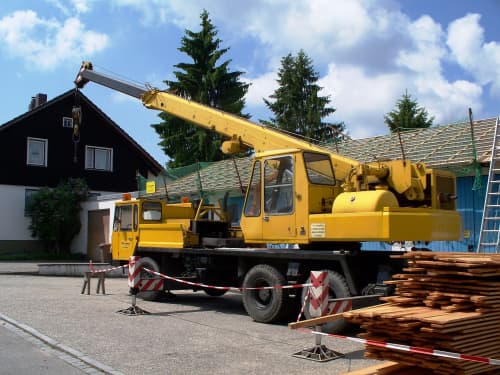
A Tower Crane
When most people think of cranes this is what they think of. A form of balance crane, tower cranes are fitted into the ground and used to move and carry heavy materials for longer distances. They are most often used when constructing tall buildings.
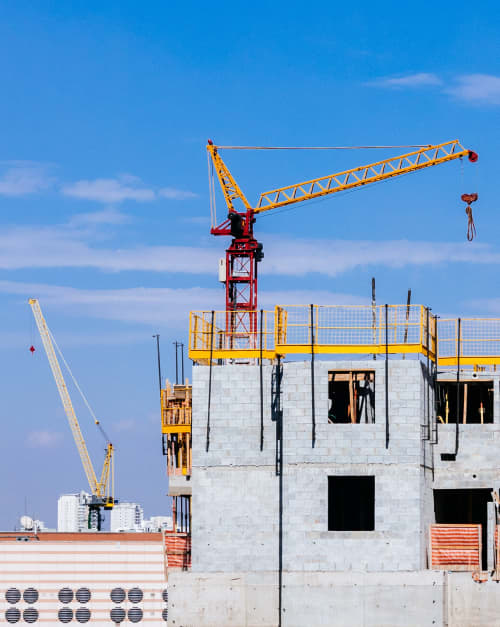
The concrete foundation for a tall tower crane must be built about a month before the crane actually goes up. This gives the foundation time to settle and become strong enough to hold the crane.
How do tower cranes get so tall? They build themselves! Check out this video to see how a tower crane constructs itself:
Rough Terrain Cranes
With an undercarriage that resembles a monster truck, a rough terrain crane is fitted in four giant rubber wheels to help carry the crane to wherever it’s needed. Since this is a portable crane, the undercarriage has vertical and horizontal extending outriggers to help provide stability and support while operating.
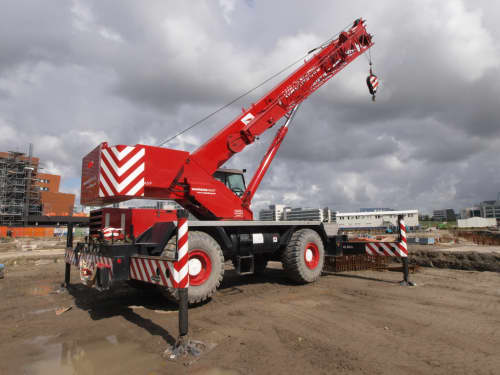
Rough terrain cranes would be used for any projects that require material movement over uneven ground or off-road type surfaces. What’s interesting about rough terrain cranes is that they are a single-engine machine, meaning that the same engine that moves the machine also operates the crane. Since there is only a need for one engine, these machines are much more compact than other cranes.
Safe Operation of Cranes
Crane operation safety is unique to other pieces of equipment because the machine itself isn’t moving. With tractors, dozers, and backhoes, the machine is moving around, driving around people, and carrying equipment with a driver responsible for checking all blind spots and using proper signals.
With cranes, the operator is in a fixed position and it is the material itself that is moving. Safe operations of and around cranes depend just as much on the operator as it does for those on the ground. While the operator needs to use best practices for lifting and moving materials, contractors should stay a safe distance away from the loads, heed the warning about moving materials, and communicate property with the operator.
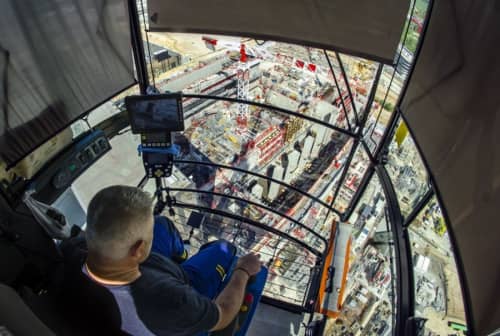
This is especially true for tower cranes where the operator can be so high up that there’s no way for him to see what is happening on the ground.
Be Aware of Surroundings
Contact with electrical lines is one of the main accidents associated with cranes. Like any other kind of equipment operation, taking the time to review the site, start the day with a plan, and to prioritize communication can make the difference when it comes to safety. It’s the best way to avoid hazards such as electric lines, other pieces of equipment or injuring coworkers.
This is true as well for operators who are climbing tower cranes. Slippery rails or not wearing proper PPE could lead to a life-threatening accident.
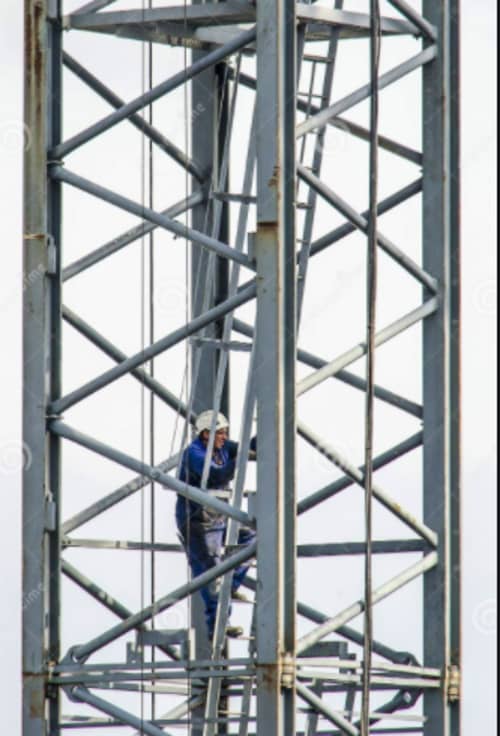
Proper Setup
Sadly, one of the most common accidents for cranes is buckling or collapsing. Improper crane assembly can be dangerous for the entire construction site and – depending on the height of the crane – the surrounding community. Daily inspections are key, even if the crane is a tower crane that has been there for weeks.
Load Security
Many safety standards associated with cranes relate back to load security. Load and lift limits must be respected. The load should be lifted as close to the crane as possible and as low to the ground as possible. Always test load limits and make sure that materials are properly secured before lifting them.
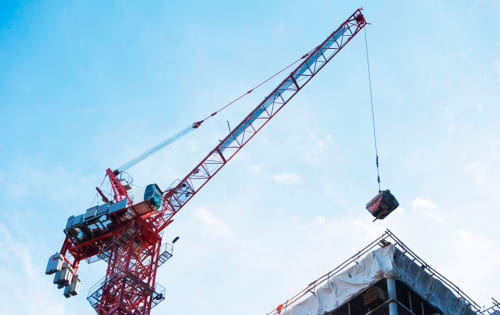
Comentarios
Publicar un comentario